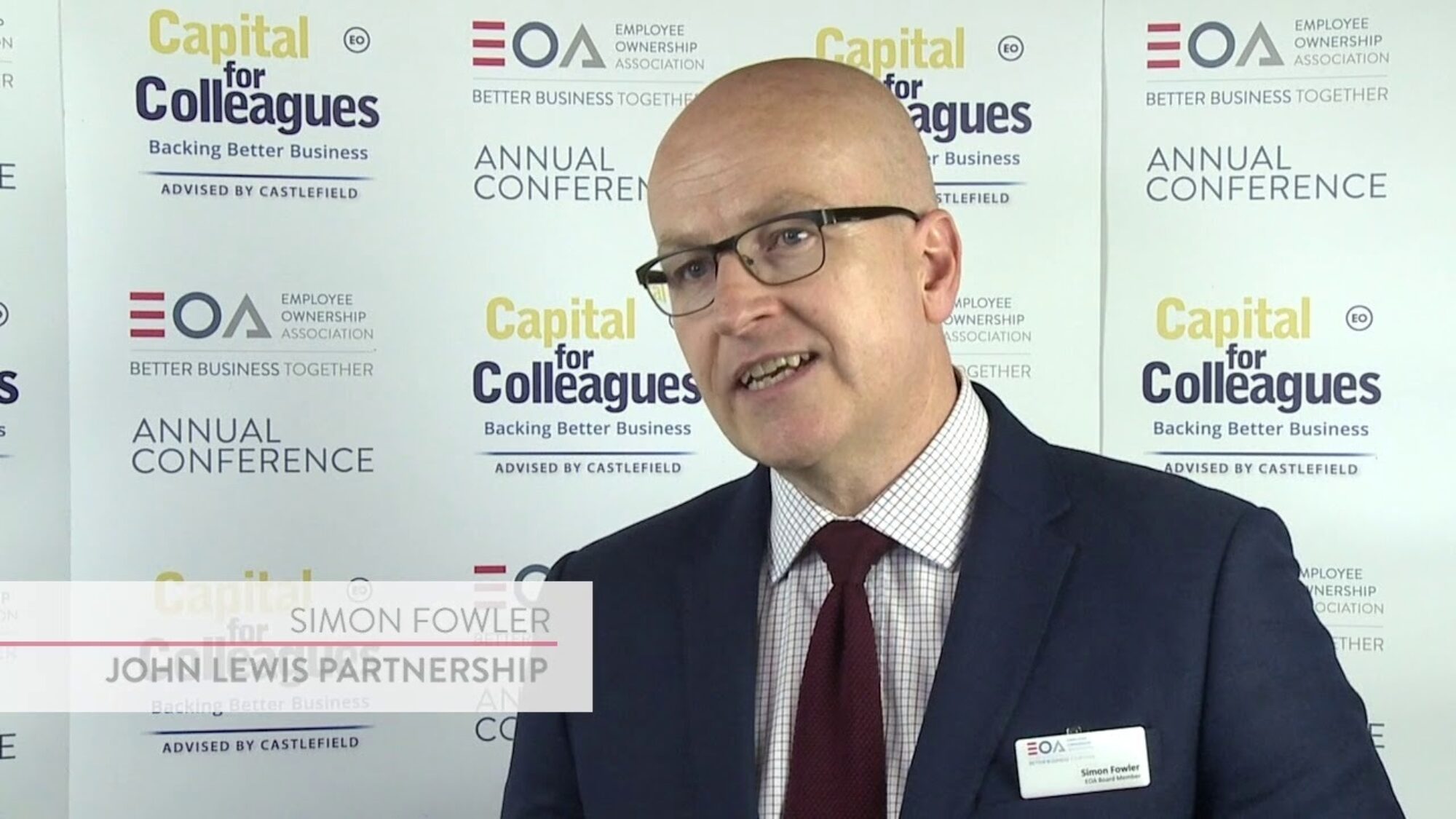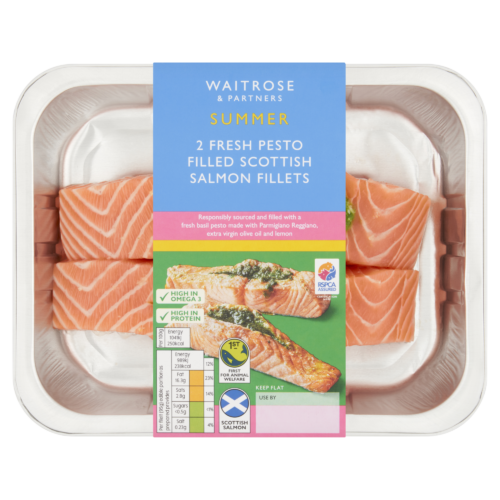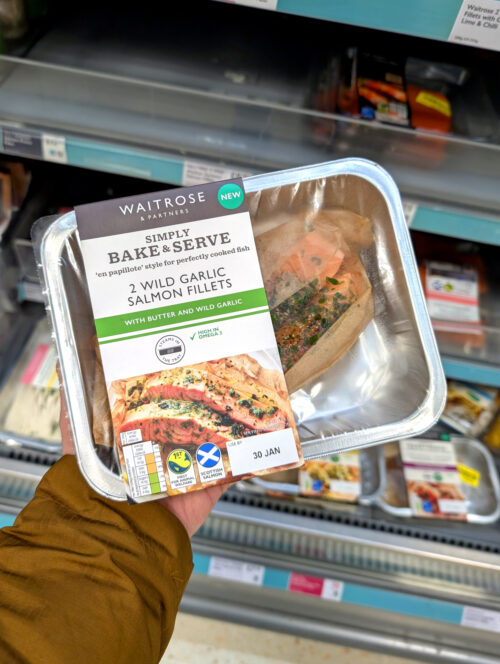
Aquascot launches two new Scottish salmon products at Waitrose
This is the second part of our Q&A session with Simon — Part 1 can be found HERE.
I have and it’s interesting to see all the information that it contains. When I looked after the John Lewis Partnership’s Gazette, my team and I went through a whole programme to reinvent the way the Gazette was put together. I’m sure we’ll have this in mind at some point for Fish Tales. No communication channel ever stays the same, it has to evolve to suit the needs of its audience and the way the audience wants to take on information. Over time we identified that the Gazette needed a refresh to suit the needs of our current generation of Partners.
By way of background, the Gazette is a printed, full-colour magazine, published every week, on a Friday, in hard copy and sent to every business unit in the JLP. It therefore has to appeal to over 80,000 Partners. Its role in sharing knowledge with co-owners is as important as ever, but in an increasingly 24/7, digital world, the Gazette needed a refresh to suit the evolving needs of our Partner audience.
When we researched how well the Gazette was read, we found readership numbers were lower than we had anticipated. Partners told us they were time-poor and preferred to spend their breaks on non-Partnership social media, rather than reading lengthy articles about our business. They preferred a livelier, easy to read magazine, with shorter, smarter, snappier content. They told us social media offered them more accessible content in small, bite-sized chunks containing pictures, images and videos that helped to tell them news stories in a more compelling way. Importantly, what they accessed felt relevant to them.
We had already started to experiment with different approaches to cover stories and presenting news content and for many, some of these more entertaining approaches had encouraged them to pick up the Gazette for the very first time. We had to grasp this insight in order to engage with an even wider Partner audience, more often. We needed a rethink on how to deliver fresh, exciting and relevant news content, in a new bite-sized way.
Alongside this, we also wanted a refreshed Gazette to return to a more independent journalistic approach. One where my team of journalists would choose which stories to run and how to position these alongside any requests they received to include articles about important business information from members of the Executive Team. The Gazette journalists would therefore report objectively and fairly, holding management to account to encourage healthy debate where appropriate.
Using this feedback, we redeveloped the whole of the Gazette and in 2018, we launched a new look which had a more simplified and streamlined way of presenting the Partnership’s news, using jargon-free language.
Whilst we continued to produce a hard-printed copy, we also significantly enhanced our digital format. We aimed to ensure each full Gazette publication was in easy to navigate sections, covering a number of key themes of information with Partners. We settled on six consistent pillars.
We keep this format and the features in the Gazette pretty constant in each edition, and as part of the refresh, we also reduced the page count, which helpfully managed to save some money in the process.
I think our Fish Tales publication looks good. I would just encourage us to think constantly about the publication from our readers’ perspective. That way we always remain alive to the evolutionary steps that might be needed in order to remain interesting and relevant to our Partners.
In an EO business, we need to demonstrate that we are different in a good way to other forms of doing business. Our communications must also do this by being open, transparent, authentic and trusted. These are some of the hallmarks of good communication and help Partners understand what’s happening, why it’s happening and, more importantly, how they can help make a difference.
I’ve always believed that people and organisations do well when talent and capability grows. In most organisations, there is a careful balance to be had between the benefits of growing internal talent vs recruiting external talent. I think this is a healthy approach and given most organisations will experience people turnover, it’s sensible to have a talent strategy that encompasses the benefits of both – bringing in new recruits with different perspectives and growing internal talent. An employee-owned business is like a family, and most families are always stronger for growing through both new internal and external arrivals. Businesses are also better served when people have diversity of thought and can share different views and different opinions rather than having a homogenised, single view of the world.
I think maintaining a core element of knowledge and culture within high performing people who have worked in a business for a long period of time is helpful. In Aquascot, long-serving Partners will play a really valuable role in this respect. However, flexibility and a willingness to change are also important qualities for long-serving Partners, given the business and the way we work needs to evolve and change over time. This often requires curiosity and bravery. Recognising that change is a constant, and that no matter how long you’ve been in an organisation, changing and being prepared to change the way in which you do things are really valuable qualities.
I think moments where you test the cultural strength of an organisation are the moments that demonstrate whether it’s got the right level of resilience and sustainability. The pandemic, for all its challenges, demonstrated that in our business each Partner knew their role and played it brilliantly. Partners rose to the challenge and in many cases, went above and beyond what was expected. I think this demonstrates that all the best foundational elements exist within Aquascot as an EO business, and these have really come to life over the last couple of years.
There are many organisations that didn’t survive the pandemic. Many failed because their levels of employee engagement and their processes weren’t good enough. I therefore think Partners should be hugely proud of the fact they managed to deliver such good results for Aquascot when many other businesses failed to keep up. It’s good that life is beginning to get back to a little more normality, although I think we are all going to have to recognise that this will be a ‘new normal’ for everyone – nothing will ever be quite the same again.
We’ve learned a lot over the last 2 years and this, along with feedback and insights from Partners, means we’re now in a position to launch a new strategic plan this year. Following the important publication of our re-defined purpose last year – ‘Nurturing wellbeing for all’ – supported by our new values and principles, the Board and I have been developing this next phase of our strategy. Our plan is called ‘Aquafuture 2030’ and is intended to provide us with a strong foundation for the future success of our business. Alongside our purpose, values and principles, it will deliver on our ambitions for continuous commercial improvements, our focus on meeting our environmental goals and our commitment to being a great employee-owned business, valued by our Partners, our community and our stakeholders.
We will share more detail on the
content of Aquafuture 2030 over the coming months, so every Partner is
clear on our plan, and the role they will need to play in helping to deliver
it.

I went on a tour of the production sites and offices last year and will make a point of spending time out and about in the business every time I come to Alness. I last visited in March, when I walked both sites and met with Partners.
I enjoy experiencing the pace and energy on our sites – everyone is doing a great job and this is clear just looking at what people are doing and how they’re doing it. Partners really care and that’s tremendous to see. Great skills, great energy and great focus.
Interviewed by: Justine Fourny (Category & Marketing Officer)

Aquascot launches two new Scottish salmon products at Waitrose

Introducing Our New Summer Dish: Fresh Pesto Filled Scottish Salmon Fi...

Aquascot is excited to announce our involvement in the new 'Simply Bak...

Aquascot has appointed Fred Bowden as Chairman of the Aquascot Board, ...